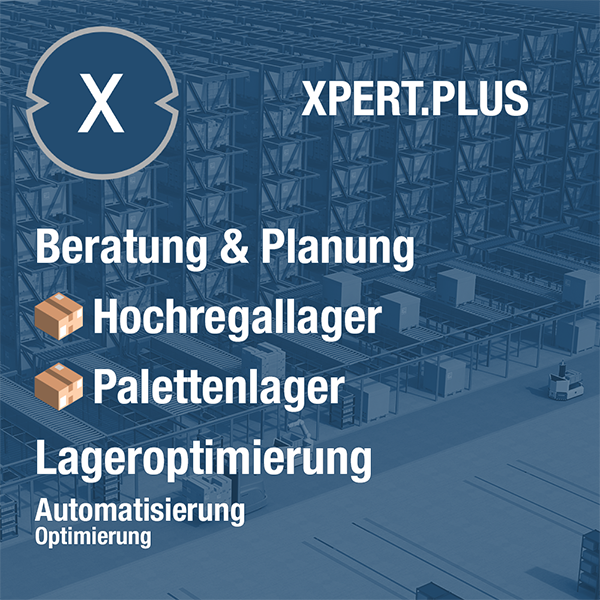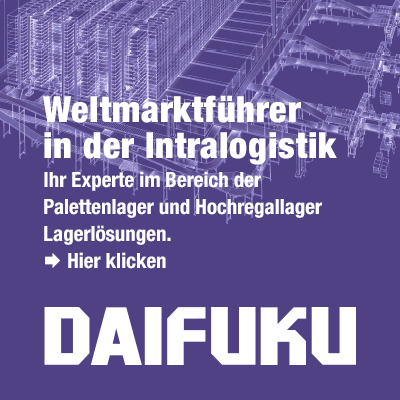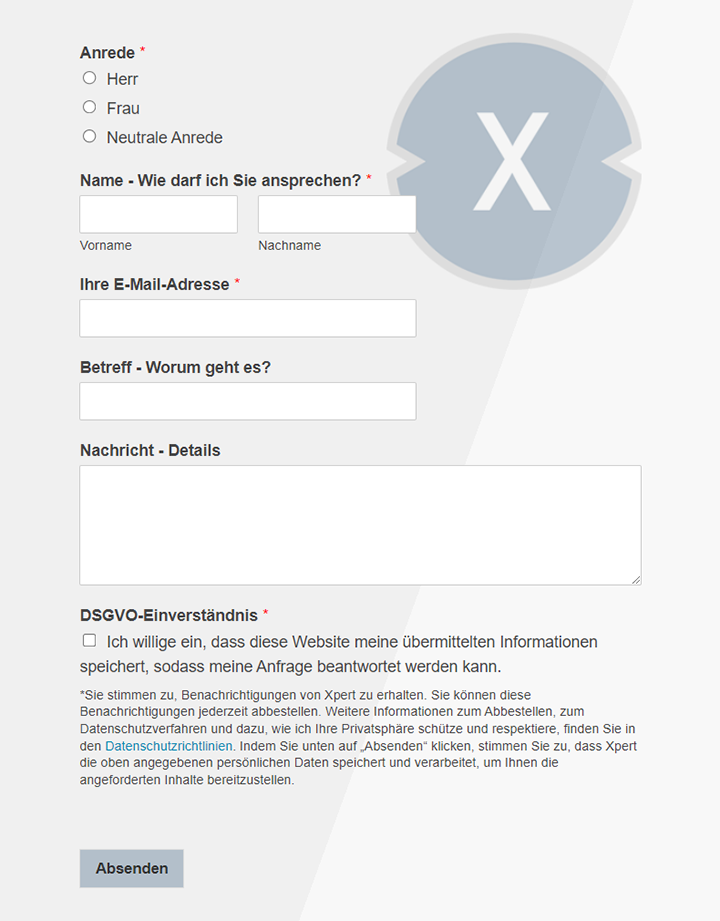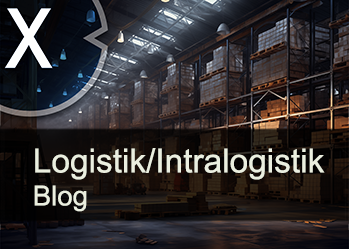10% of the camps are buffer warehouse and demand is increasing - forgotten heroes of logistics? Focus on buffer camp
Xpert pre-release
Language selection 📢
Published on: February 15, 2025 / update from: February 15, 2025 - Author: Konrad Wolfenstein

10% of the camps are buffer warehouse and demand is increasing - forgotten heroes of logistics? Focus - picture: Xpert.digital
Buffer warehouse secret in Germany: Why these inconspicuous warehouses stabilize our economy
The growing importance of buffer camps in Germany
Buffer camps play an increasingly central role in modern logistics. While they were often considered a pure intermediate storage in the past, they have developed into an essential part of resistant supply chains in recent years. The increasing uncertainty in global markets, interrupted supply chains and geopolitical crises have meant that companies are increasingly relying on buffer camps in order to secure their production and delivery processes.
Use and function of buffer camps
Buffer camps serve to compensate for temporary fluctuations in demand or delivery bottlenecks. Companies use them in particular in the following scenarios:
- Fluctuating demand: Seasonal tops in retail or production delays can be intercepted by buffer camps.
- Subsidids: Global crises, natural disasters or geopolitical tensions can lead to delays in production or delivery. Buffer camps secure continuous care here.
- Just-in-case strategy: While just-in-time has been the standard in logistics for years, companies are increasingly relying on “Just-in-Case” to avoid unforeseen bottlenecks.
- Production continuity: Manufacturers can prevent buffer camps from leading to costly production stamp stands.
Suitable for:
- Buffer storage: For e-commerce, retail and manufacturing industries
- Just-in-time deliveries (JIT) 2.0: The flexible supply chain of the future-with and without a buffer camp
Current trends and developments
Increasing demand for buffer camps
In recent years, the demand for buffer camps has increased continuously. Especially due to the Covid 19 pandemic and the associated disorders in the global supply chains, it has been shown that additional storage capacities can be a crucial competitive advantage. According to industry reports, logistics service providers report a rapidly growing demand.
Market development and new construction of logistics areas
The German logistics property market is located in a stable growth phase. In 2024, over four million square meters of new logistics areas were developed, a significant share of which serves as a flexible storage area. Experts estimate that at least two million square meters exist as a so -called “gray market”, i.e. storage areas that can be used for buffer capacities at short notice.
Some of the most important actors are on the market:
- International logistics service providers with extensive networks and several locations in Germany.
- Medium -sized companies that specifically invest in storage capacities.
- Real estate developers who provide flexible storage space especially for the buffer storage requirement.
Changes and challenges in the buffer camp market
Reduction of storage capacities after times of crisis
With the recovery of the global economy after pandemic, some companies have started reducing their inventory in order to save costs. Nevertheless, the long -term trend towards using buffer camps remains, especially since geopolitical uncertainties and trade conflicts continue to be a risk.
Costs and prices for buffer camps
The prices for storage areas vary depending on the location, infrastructure and specific requirements. A pallet parking space in a buffer camp currently costs between 5.00 and 9.00 euros per month. Factors that influence the price include:
- Location of the warehouse (metropolitan regions vs. rural areas)
- Temperature-guided storage (e.g. for pharmaceutical or food products)
- Security standards and accessibility
- Rental period and flexibility
Increasing importance through digitization and automation
Technological developments
Digitization and automation have also revolutionized the area of the buffer camp. Modern warehouse management software (Warehouse Management Systems, WMS) enables more efficient use of the areas and more precise stock control. The most important technologies include:
- Automated warehouse robots: These reduce space requirements and increase efficiency.
- Artificial intelligence (AI) in inventory planning: The inventory can be optimally adjusted through predictive analyzes.
- IoT-supported real-time monitoring: Sensors monitor temperature, moisture and safety standards.
Suitable for:
Flexible warehouse strategies and sharing concepts
New concepts such as “Warehouse Sharing” or “on-demand storage space” are becoming increasingly important. Companies rent storage space at short notice as required, which reduces the fixed costs and ensures more flexibility. Platforms such as Logivisor.com now offer over 1.5 million pallet parking spaces, and the trend is rising.
Effects on different industries
Retail and e-commerce
The e-commerce boom has significantly influenced warehouse logistics. Online retailers must be able to deliver goods quickly, which makes buffer camp indispensable. Amazon, Zalando and other wholesalers are increasingly relying on strategically distributed camps to minimize delivery times.
Automotive industry
Automobile manufacturers are particularly susceptible to delivery bottlenecks, as many supply parts come from different countries. You can cushion bottlers through buffer camps and avoid production failures.
Pharmaceutical and chemical industry
The storage of sensitive products requires special conditions. Here buffer bearings with strict regulations and special temperature requirements are necessary to ensure the quality and safety of the products.
Buffer camp: Key to the resilient supply chain of the future
Buffer camps are not a short -term trend, but a strategic element of modern supply chains. While some companies reduce their storage capacities after times of crisis, the general development towards stronger use remains. Factors such as digitization, automation and growing uncertainty in the global markets will continue to increase the demand for buffer camps.
Companies that rely on resilient and flexible logistics strategies will be better positioned in the long term in order to counter the challenges of the future. Investing in buffer camp will therefore also play an important role in the strategic planning of many companies in the coming years.
Xpert partner in warehouse planning and construction
Our recommendation: 🌍 Limitless reach 🔗 Networked 🌐 Multilingual 💪 Strong sales: 💡 Authentic with strategy 🚀 Innovation meets 🧠 Intuition
At a time when a company's digital presence determines its success, the challenge is how to make this presence authentic, individual and far-reaching. Xpert.Digital offers an innovative solution that positions itself as an intersection between an industry hub, a blog and a brand ambassador. It combines the advantages of communication and sales channels in a single platform and enables publication in 18 different languages. The cooperation with partner portals and the possibility of publishing articles on Google News and a press distribution list with around 8,000 journalists and readers maximize the reach and visibility of the content. This represents an essential factor in external sales & marketing (SMarketing).
More about it here:
Buffer camp report: This is how companies secure themselves against chaos supply chains (and what that costs)-background analysis
Buffer camp in the German logistics sector: An analysis of importance, trends and perspectives
The question of the exact proportion of buffer camps on the entire storage area in Germany cannot be answered with a single, precise percentage. There is no central recording that looks at this special storage type in isolation and statistically recorded. Nevertheless, it is possible to draw a more comprehensive image of the role and importance of buffer camps in the German logistics sector through the analysis of various indicators and market developments.
Although reliable, all -German statistics are missing, various studies and industry observations indicate that buffer camps make up a relevant, albeit difficult to quantify part of the logistics property market. A study by the Ingolstadt technical university provides a first clue: According to this, around 10 percent of the companies surveyed use buffer camps . However, this number should not be interpreted as an absolute size for the overall market, but rather as an indication of the spread of buffer camps within a certain group of companies. It can be assumed that this percentage can vary greatly depending on the industry, company size and business model.
In order to better understand the importance of buffer camps, it is essential to first define their function and demarcation to other storage forms. Buffer camps are deposits that serve to cushion fluctuations in demand or in the offer and thus to ensure a smooth production and delivery process. They act as a kind of “security network” in the supply chain that protects the company from unforeseen events and volatility. In contrast to classic camps that primarily serve long -term storage, buffer camps are characterized by their flexibility and reactive orientation for short -term changes in needs.
Suitable for:
The diverse functions and advantages of buffer camps
Buffer bearings fulfill a variety of important functions within the logistics chain and offer companies various advantages:
Cushion of demand fluctuations
In markets with seasonal fluctuations, economic cycles or unpredictable demand for demand, buffer warehouse enable companies to decouple production and stock. For example, you can produce in times of less demand and interlock the goods in the buffer warehouse in order to have them available quickly with increasing demand. This prevents bottlenecks and enables more uniform utilization of the production capacities.
Securing delivery capacity
Buffer camps play a crucial role, especially in globalized supply chains, which are susceptible to disorders due to natural disasters, political instability or logistical problems. They enable companies to keep critical raw materials, components or finished products in order to avoid production failures or delays in delivery. This increases the resilience of the supply chain and ensures the continuous care of the customers.
Optimization of production processes
Buffer bearings can help optimize production processes by serving as an intermediate storage for semi -finished products or components. This enables more fluid production, reduced waiting times and bottlenecks and increases the efficiency of production. In addition, buffer bearings can increase the flexibility of production by enabling it to react quickly to changes in product demand or to individual customer requirements.
Reduction of transport costs
Due to the strategic placement of buffer camps near production facilities, sales centers or important traffic hubs, transport routes can be shortened and transport costs can thus be reduced. This applies in particular to companies with large sales markets or complex distribution networks.
Improvement of customer service
Buffer camps contribute significantly to improve customer service by ensuring a high level of willingness to deliver and short delivery times. Customers expect increasingly fast and reliable deliveries today. Companies that have a well -functioning buffer storage system can better meet these expectations and thus provide a competitive advantage.
Risk management
Buffer camps are an important instrument in risk management. They help companies to secure themselves against unforeseen events such as production failures, delivery bottlenecks or sudden changes in demand. In times of crisis, buffer camps can even be vital to ensure business continuity.
Trends and developments in the field of buffer camp
The demand for buffer camps has increased significantly in recent years, especially in the context of global crises and volatile markets. Logistics service providers unanimously report on increasing demand for flexible storage areas that can be used as a buffer camp. The need to secure supply chains and make them more resistant to disorders has caused many companies to rethink their warehouse strategies and to rely on buffer warehouse.
Corona pandemic, the war in Ukraine and other geopolitical tensions have clearly shown the susceptibility of global supply chains. Companies that had previously placed on slim warehouses and just-in-time deliveries had to find out that these strategies quickly reach their limits during times of crisis. The result was an increased rethink towards more resilient supply chains in which buffer camps play a central role.
This trend towards increasing resilience has also been reflected in the new buildings in the logistics property market. In 2024, the entire logistics property market in Germany comprised new buildings of over 4 million square meters. A significant part of these areas should also be used for buffer camps, even if this is not explicitly shown in the statistics. In addition to the new construction areas, there is a considerable “gray market” of at least two million square meters for flexible storage areas, which also often serve as a buffer warehouse.
Interestingly, in 2024 there were also signs of a partial reduction in buffer camps. This could indicate normalizing the global economic situation and a certain relaxation in the supply chains. However, it is important to emphasize that this breakdown does not necessarily mean a general decline in the importance of buffer camps. Rather, it could be an adaptation of the inventory to the current market situation after excessive buffers may have been built up in the crisis years.
Current market situation and price development
The German logistics property market is currently showing a stable development in the new building volume. In the first half of 2022, almost 2.6 million square meters of new logistics areas were built. It can be assumed that part of these areas is also used for buffer warehouse in order to meet the still existing demand for flexible warehouse solutions.
An indicator of the persistent importance of buffer camps is the development of the offered pallet parking spaces on logistics service providers such as Logivisor.com . Around 1.5 million pallet spaces are currently being offered there - with increasing tendency. This corresponds to an increase of around 30 percent compared to the previous year. This significant increase underlines the growing demand for short -term storage capacities, which are often used as a buffer camp.
The reasons for this increase are diverse. In addition to the factors already mentioned, such as the desire for more resilient supply chains and the suspension of demand fluctuations, economic developments also play a role. The breakdown of overcapacity from the pandemic period, a break-in of new customer business and a declining development in industries such as e-commerce, consumer trade as well as chemistry and pharmace .
The prices for pallet parking spaces in buffer camps vary depending on the region, product and specific requirements. They are currently between 5.00 and 9.00 euros per pallet parking space in Germany. Regional differences, the equipment of the warehouse (e.g. temperature guidance, shelf systems) and the contract term significantly influence the price. In metropolitan areas and economically strong regions, prices tend to be higher than in rural areas.
Suitable for:
Digitally networked: buffer warehouse as a key to modern warehouse strategies
Buffer camps play an indispensable role in the German logistics sector and are an essential part of modern supply chain strategies. Although their more precise proportion of the entire storage area is difficult to quantify, various indicators and market developments indicate their growing importance. The estimates that around 10 percent of companies use buffer camps give a first impression of their distribution, even if the actual share of the overall market for logistics properties is probably higher.
The increasing volatility of the global markets, the need for resilient supply chains and the increasing need for flexible warehouse solutions will continue to drive the demand for buffer camps in the future. Companies that adapt their warehouse strategies to the changed framework conditions can strengthen their competitiveness, ensure their ability to deliver and optimize their production and logistics processes.
Technological development will also have an impact on the future of buffer camps. Automation, robotics and digital warehouse management systems (WMS) enable more efficient processes in buffer camps and contribute to reducing costs and further increasing flexibility. The integration of buffer camps in digital supply chain networks will become even more important in the future to ensure transparent and reaction -fast control of the flow of goods.
Buffer camps are more than just temporary deposits. They are strategic instruments that help companies assert themselves in an increasingly complex and dynamic market environment and to secure their long -term competitiveness. Their importance is expected to continue to increase, since companies strive worldwide to make their supply chains more resilient, more flexible and efficient.

Xpert.Plus warehouse optimization - high-bay warehouses such as pallet warehouses consulting and planning
We are there for you - advice - planning - implementation - project management
☑️ SME support in strategy, consulting, planning and implementation
☑️ Creation or realignment of the digital strategy and digitalization
☑️ Expansion and optimization of international sales processes
☑️ Global & Digital B2B trading platforms
☑️ Pioneer Business Development
I would be happy to serve as your personal advisor.
You can contact me by filling out the contact form below or simply call me on +49 89 89 674 804 (Munich) .
I'm looking forward to our joint project.
Xpert.Digital - Konrad Wolfenstein
Xpert.Digital is a hub for industry with a focus on digitalization, mechanical engineering, logistics/intralogistics and photovoltaics.
With our 360° business development solution, we support well-known companies from new business to after sales.
Market intelligence, smarketing, marketing automation, content development, PR, mail campaigns, personalized social media and lead nurturing are part of our digital tools.
You can find out more at: www.xpert.digital - www.xpert.solar - www.xpert.plus


























